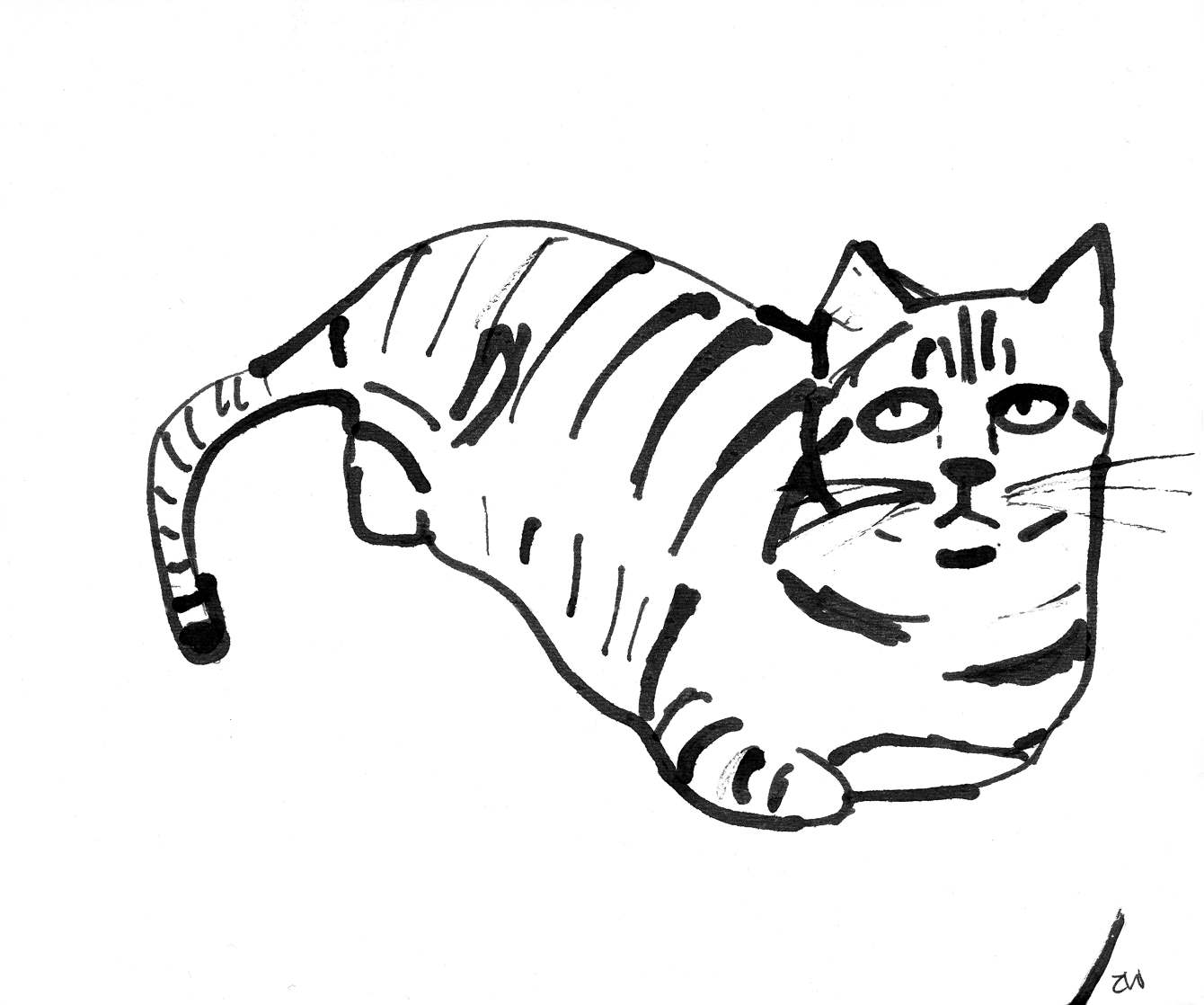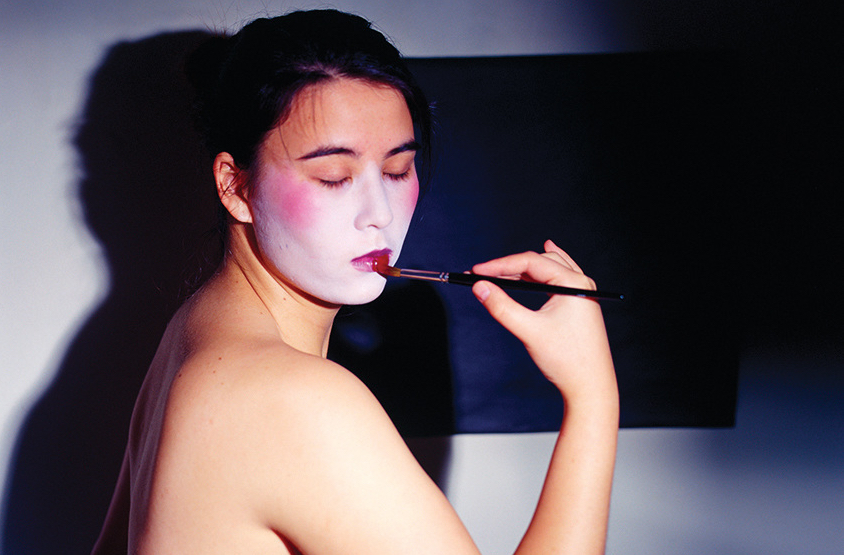Artist profile: Zoe Wong
By Katie Winten
We’ve been enamoured with Sydney-based artist Zoe Wong’s cat drawings for quite some time now, so we recently approached Zoe to see whether she’d be interested in designing a tote bag for our upcoming fundraiser, Totes Gay.
To our delight, not only did Zoe agree, but we also discovered that she’s currently in the process of creating a body of work about the lesbian death trope in screen culture. We caught up with Zoe to chat about the importance of diversity in screen representation for LGBTQI+ identity and her thoughts on the plebiscite.

You’re in the process at the moment of creating an artwork that explores the on-screen lesbian death trope. Can you tell me a bit more about the work?
There was a character called Lexa from a tv show called The 100 who recently got killed off earlier this year in March. She had a much anticipated love scene with the main character, and then got carelessly killed by a stray bullet straight afterwards. Her death sparked a huge backlash from the queer community online, so I started to collate and read into all these articles and comments about the ‘Lesbian Death Trope’ or the ‘Bury Your Gays Trope’ present within TV and Cinema. This served as a core inspiration for the work I’m making.
There’s an article on Autostraddle called “All 162 Dead Lesbian and Bisexual Characters On TV, And How They Died”, and it’s fucking crazy. Just flicking through them quickly you can see there are a lot of stray bullets, a lot of cancer, and a lot of accidental deaths. I think with the online queer community it’s had a really big backlash, because there’s not much representation of queer women on television, and when there is, they end up dying, which doesn’t really send a positive message to fans or viewers.
I think it stems a lot from lesbian pulp fiction novels of the 1950s. There was a lot of censorship during that time. So you could have lesbian or bisexual main characters, but they either had to die or end up insane, or end up going back to their husbands or going back to their family. It’s like television and cinema still has the tail end of that psyche. You can have those characters on screen, but you can’t condone the ‘lifestyle’. You have to make their stories end badly.
You work across a broad variety of mediums – photography, video, installation and drawing. Can you tell me a bit about the different elements of this work?
There are two parts to this work. The first is an installation where I’ve created physical memorials for a selection of characters. The aesthetic is inspired by roadside and public memorials – where flowers, cards, candles etc are often piled up against a pillar or a photo. I’m creating a space where the audience will be able to bring flowers or whatever tribute items they like for a character that they’re mourning. I feel like the grieving process for on-screen characters is mostly done on the internet, so I wanted to create a physical space for this.
The second part I’m working on is a multichannel video installation, which will be a mix of cuts from a collection of all of the death scenes of queer women on screen. I wanted to have a direct and explicit representation for this queer character death trope, to contrast against the memorials. Almost a cause and effect.
By bringing the grieving process into a physical space, are the memorials offering a more constructive way to explore that death trope? Is it about closure and collective mourning?
Yeah, I think so. Growing up, my experience with a queer community was always online, and was always quite private. I went to a religious school in a smallish town, so when I came out I didn’t really have a strong queer network. Everything that I learnt about queerness was through TV, through cinema, or online. Positive representation was always really important to me, because I think you can see yourself or part of yourself as that character. You never know what you’re missing out on until you’ve got a positive representation of yourself on screen, I think it affects a lot of people. So by having a physical memorial space, at least for me, is a very tangible representation for what’s going on online, while also commenting on audience/fan experience and relationship with these characters. Who knows, maybe this is just my way of sharing my pain with others…
Are there particular characters that will be represented in the work?
At this stage, there will be 5 characters for the memorial. It will be Tara Maclay (Buffy the Vampire Slayer), Poussey Washington (Orange is the New Black), Lexa (The 100), Dana Fairbanks (The L Word), and Xena (Xena: Warrior Princess). Those will be the five memorials, but for the video work it’s a much bigger inclusion. I’m starting to group all the videos into separate categories. All of the bullet scenes, hospital scenes, car accident scenes etc etc. when you cut it and intersect it like that, those small moments become huge. That’s what I’m after – to have a kind of onslaught.
The lesbian death trope is quite a niche aspect of screen culture to explore, how did you decide that it would be the central focus of your work?
It’s funny, when I first read a few articles on it years ago I thought “oh my god that’s whats been happening! I wasn’t imagining it!” and then just assumed that everyone would know about it because it felt so bloody obvious. But I guess if you’re not really into TV or are straight, it’s quite a subtle thing to notice. I definitely deliberated about the lesbian death trope – I always questioned whether it actually exists. I’ve been trying to read articles that are in support and opposition of it’s existence, because that’s what you do when you do good research. But watching all the videos and episodes where this happens, it’s impossible not to notice a pattern. Through reading all of the comments on blogs and forums like Autostraddle and Afterellen, I think the queer community forms a very special bond with those characters, because let’s face it, there’s not many of them. You get super attached to them. It’s not like we have a huge pool to pick from, so you really cling on to that one character. In that TV show, that’s the one representative of your identity, or part of your identity. I think it’s almost a double mourning – you’ve got the character that you appreciate on a personal level, but then you also mourn everything that that character stands for within this society. At the end of the day I think queer representation onscreen is not great, it could be so much better. And as someone who is very much involved within the realm of Pop Culture, I feel compelled as an artist to explore and critique it.
Thanks so much for contributing a tote bag to our upcoming fundraiser, Totes Gay! We’re auctioning off customised tote bags from local artists and designers to raise funds for marriage equality. What are your thoughts on the plebiscite/marriage equality?
To be honest, the plebiscite feels like the government is just stalling in making a decision. I think it’s a waste of tax payer’s money for an official ‘opinion poll’ which technically the government isn’t even bound by if it does go in our favor. Marriage equality is a no brainer; I still can’t understand how one group of people can so comfortably deny rights to another group of people. It’s ridiculous, I mean how do they sleep at night? Probably quite well on their bed of privilege. If the plebiscite does go ahead, I have no doubt in my mind that Australia will be for marriage equality, we’re more than ready. Now its just about waiting for the government to actually pay attention to what the people want.



